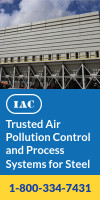ThyssenKrupp Group Recognized for TWB Laser Optical Element
05/01/2006 -
May 2006 — A working group from ThyssenKrupp Steel AG has won the “Lasertechnik 2006” Innovation Award for the development of a new laser welding optical element.
The team developed the innovative Beam Control Optic (BCO) to provide greater precision, quality and productivity in the laser welding of non-linear tailored blanks. Non-linear tailored blanks, developed by ThyssenKrupp Steel under the trademark Thyssen Engineered Blanks®, are steel blanks made up of individual sheets of different strength, thickness or finish. Unlike standard tailored blanks, Thyssen Engineered Blanks feature nonlinear welds. This allows the blanks, which are processed into body and chassis parts in the stamping shops of automotive OEMs, to be tailored exactly to the actual stresses of the finished part. This technique allows weight savings of between 20 and 40 percent to be achieved.
Engineered Blanks are made on automated production lines in which the abutting sheets are
mounted on fixturing devices and passed under a laser welding gantry. The gantry can be
moved at right angles to the direction of the blanks to allow the laser welding head to follow the butt joint detected by the seam-tracking sensor. However, the full weight of the gantry needs to be moved for this, requiring complex and expensive control systems to overcome the inertia of the moving masses and ensure the required welding precision.
The working group led by ThyssenKrupp’s Stefan Wischmann has now developed a far simpler solution to this problem: with the BCO system, only the laser beam needs to be moved to follow the weld seam, rather than the entire laser welding head or even the entire gantry. This is achieved by using a small scanning mirror — some 50 mm in diameter depending on application — which can reposition up to 200 times per second to keep the laser beam in exactly the required position. The seam tracking sensor reports the exact position to an electronic unit controlling the scanning mirror almost instantaneously.
Unlike the conventional solution, in which the sensor is positioned up to 30 millimeters ahead of the point at which the laser beam strikes the seam, the BCO system measures directly in front of the welding point, allowing more precise beam control. The development of the innovative BCO system also includes a new sensor which operates reliably despite its proximity to the welding point and the brightness created by the laser.
The BCO system is an independent unit which can be mounted on any handling system. The new technology makes it possible to produce non-linear tailored blanks using comparatively low-priced industrial robots rather than expensive gantries. The robots do not need to display high accuracy as the Beam Control Optic ensures the precision guiding of the laser beam. Further advantages of the new technology include shorter product changeover times, higher welding speeds and improved production quality with lower reject rates. ThyssenKrupp Steel has patent applications pending for key elements of the new technology.



.jpg?lang=en-US&ext=.jpg)
.gif?width=220&height=200&mediaprotectionhash=374c6b9a31f2b2fbfc7937391034efb46fd57feba997b9ad2ae9a0bd3d48329d&ext=.gif)

.gif?width=100&height=200&mediaprotectionhash=e2d5b15d68f84f22038524be6c58e5268d67b7f44494b544e29a8d53c5b959ba&ext=.gif)


